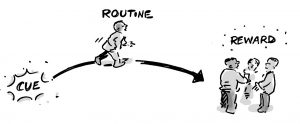
Coaches have the job to help others perform at their best. But coaching is also a capability (not just a role) that anyone can develop. I’d argue we all need a “bit of coach” in us. There’s something about helping those around us to be all they can be that is noble and, well, human. Coaching has many forms—telling, mentoring, listening, and questioning are all aspects to consider—but in today’s ever-changing world, coaching is more situational than ever before. Coaching itself needs to be more responsive if it is to deliver the desired outcomes.
Responsive Coaching
Experts and managers traditionally have been rewarded and recognized for their ability to provide answers to their team members (tell them) on how to address problems they have previously solved. This is how mentoring works and has been referred to as directive coaching.
Even if you’re not a coach, there are steps you can try (experiment with) to improve your non-directive coaching capability—I’m going to call this style of coaching responsive. The great thing about building this style of coaching capability is that it enables you to respond (not react) to any particular situation. It gives you more options than simply telling someone the answer. Why is this useful? Well, if every time one of your team members has a problem, they come to you to solve it for them, you will never build capability in your team; they don’t have to think, innovate, or grow because you always give them solutions.
OK, enough theory. Let’s get down to what you can practically do (today) to build this capability into your style of work. What allows us to turn theory into capability is practice; just like an athlete, you need to practice something new until you can execute it.
Here are three practices to learn responsive coaching:
- Orient your mindset.
Here’s what I mean by orienting: “Align or position (something) relative to the points of a compass or other specified positions.”
Say to yourself before starting a coaching conversation: “I’m here to serve this person’s needs”
Sounds simple enough, but in order to serve someone’s needs, you need to listen (deeply) to what they have to say. For the average person, NOT giving your opinion is more difficult than you think due to the common habit of giving answers when another person presents you with a problem. Setting your intent before the conversation starts is a pre-emptive step that prepares the scene (and your mindset) because you are ensuring you don’t just tell the person your answer but instead help them discover their answer—a responsive approach. Of course, sometimes the right move is to just give them some advice, but my point here is that if you have the ability to respond with just listening as your first action, then the person has a chance to learn and grow if the situation allows for it.
- Resist the urge to solve.
Solving problems is a habit used by successful people. Usually people like help to solve their problems, but sometimes (especially if you’re in a coaching conversation) it is better for you to NOT solve your client’s problem. Instead, help them see their own problem differently and then work with them to co-create solutions.
So how do you resist the “urge to solve”? The answer is change/modify your habit—specifically the routine you run (reactively offer solutions to the problems you hear).
This illustration shows the three main parts of a habit:

- Cue: Triggers your habitual routine to run
- Routine: Usually an action you perform without thinking
- Reward: What you get as an outcome for running your routine
The key to responsively coaching is not reacting but choosing your behaviour (routine). In our example, we want to choose to listen and not react by solving our client’s problem with our solution. This leads to my third practice, which will help you implement a change to your solving habit.
- Slow down, pause, and use silence.
One of the easiest and simplest techniques to boost your ability to respond instead of reacting as you coach others is to slow things down and get used to working with silence. I’m sure you’ve read this before but have you tried doing it? Using “awkward” silences to promote deeper thinking will allow for improved outcomes from your coaching. Why? Well, if you introduce just the right amount of silence, the person you’re coaching will have the space and time to reconsider their situation and when the way forward is proposed, they will own it because they helped create it with you. Contrast this with you reactively telling them the answer to their problem. Here’s an experiment to try:
When you are put under pressure to provide advice, my suggestion is to always start with STOPPING. Pause even just for a moment, and even if you have an obvious answer to the question being put to you, pause for a moment and consider the best response. This will help you resist the urge to solve and provides you as the coach with time to consider what best serves your client’s needs. Usually your client will fill the silence with a new idea or option to help them self-solve the problem they face. That’s coaching!
Final Words
Hopefully, you now see that to improve your coaching outcomes involves you as the coach getting your own mindset right to enable a responsive (not reactive) approach to conducting a conversation. A responsive coach provides advice when required but also has the ability to be quiet and use silence. That is the best way to serve your client.
Niall McShane has been a coach for decades: He has worked with elite athletes up the Olympic level, as a professional leadership coach and change management consultant working across numerous industries, and most recently in agile coaching across company-level initiatives for large corporations all the way down to small companies. His latest book is “Responsive Agile Coaching: How to Accelerate Your Coaching Outcomes with Meaningful Conversations” (September 1, 2020). It is for anyone looking to change the way they work, including managers, leaders, and change agents, as well as agile coaches needing insights and inspiration.



